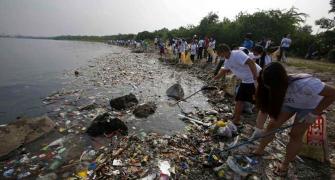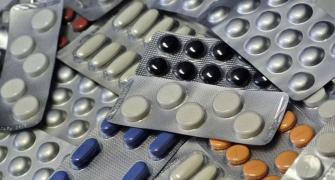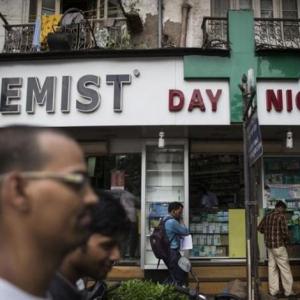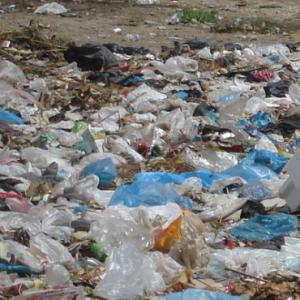After recognising its adverse health effects, the govt has now dismissed its own lab reports to conclude that the evidence against plastic is insufficient, says Nitin Sethi.

The Union government has scripted a U-turn in a year. Until March 2015, several regulatory authorities held the common stand that PET bottles and plastic multi-layered packaging was injurious for human health, besides being a serious environmental hazard.
By August 2015, this common line turned fuzzy. By March, the volte-face was complete: the government, almost unanimously, concluded that there was no proof that plastic packaging was dangerous, at least for medicines.
How did the about-face happen?
The National Green Tribunal took note of this reversal.
In March last year, the Tribunal concluded that various regulatory authorities and government ministries had “a commonality of stance” against plastic packaging.
But by August, the Tribunal noted in exasperation, “it appears that none of the concerned ministry is prepared to take a decision which, according to them, at one time was the need of the hour in the larger public interest.” The Tribunal was hearing a case filed by an NGO asking for restriction on use of plastic packaging of non-essential goods.
The NGT’s March 2015 observations came from the fact that the Director General of Health Services (DGHS), the Central Pollution Control Board (CPCB), the Indian Council for Medical Research (ICMR) and the Drugs Technical Advisory Board (DTAB) had all at one point spoken along similar lines: either recommending restrictions or ban on use of plastic and PET packaging.
CPCB had said, “It is respectfully prayed that this honourable Tribunal may restrict use of PET bottles and multi-layered packaging products in non-essential food items such as liquor, soft drink, hair oils, shampoo etc to protect the environment from unnecessary accumulation of plastics waste and to protect the health of people.”
DGHS in its affidavit referred to an earlier government report by R H Khwaja Committee on waste management to note, “It is clearly mentioned that leaching happens from PET packaging to food products even at room temperature. The chemicals thus leached may cause great harm to human health including the endocrine and neurological system.”
By 2015, the Drugs Technical Advisory Board had repeatedly warned and recommended against plastic packaging of pharmaceutical products.
“Reports of environmental and health hazards because of increasing exposure to endocrine disrupter chemical known as phthalates etc are increasing,” it said, asking for application of precautionary principle.
“In the first phase, the use of PET containers in liquid oral formulations for primary packaging of paediatric formulations as well as formulations meant for geriatrics, women in reproductive age group and pregnant women should be phased out in a time-bound manner and subsequently banned,” it concluded.
This made the health ministry put out a draft notification ordering a ban on PET bottles in September 2014.
However, it did not pursue it further after adverse comments poured in from industry and others.
On the other hand, the ministry of environment and forests consistently struck a different note.
In 2014, it told the Tribunal that the key problem “is the collection, segregation, recycling and disposal of plastic waste and the considered approach lay in the implementation of proper mechanism for plastic waste management.”
It asked for the petition to be dismissed.
In February 2015, on NGTs orders, it held a meeting with industry, the petitioners, health ministry and CPCB. Although the environment ministry sets up standards for different pollutants to safeguard human health, at the meeting it felt that the “subject matter of human health and food safety is the domain of Food Safety and Standards Act, administered by the Food Safety and Standards Authority of India.”
It said while a policy decision was required, it should be done on the basis of conclusive scientific data to be generated by new lab tests.
Mobilising support
The March order of NGT noting the near unanimity on the issue among regulators got the industry charged.
In March and April 2015, the All India Plastic Manufacturers Association held meetings of all industry ‘stakeholders’.
In its monthly report, the association notes how it tried to mobilise different users and associations of plastic manufacturers to not only implead in the case - which happened subsequently - but also to speak of the safety and necessity of plastics at public forums and in the media.
The Indian Beauty and Hygiene Association, Organisation of Plastic Processors of India, Tetra Pak and PET Container Manufacturers Association had already impleaded in the case.
The Confectionery Association, Beverages Association and All India Ayurvedic Association as active members contemplated joining the case later.
The April meeting of the association was attended by the secretary of department of chemicals and petro-chemicals and director general of Central Institute of Plastics Engineering and Technology.
The department of chemicals had impleaded in the case by then. It asked the associations for their views before presenting its case to the Tribunal.
On May 6, 2015, the department of chemicals put its stance before the Tribunal.
It came out firmly in favour of continued use of plastic packaging.
It asked for imposing exemplary cost upon the applicant for misconceived, premature and malafide application.
As proof that plastic packaging was safe, the department of chemicals attached test results from the Central Institute of Plastics Engineering and Technology, which had been carried out on the behest of and on samples provided by the Plastic Manufacturers’ Association. The institute found nothing amiss.
The plastic packaging manufacturers and many of its user industries had all along said that there was no conclusive proof of threat and that in many developed countries such as the US, PET and other packaging was being used under fixed standards.
They had said the problem lay in waste management which concerned municipalities and the public at large.
They persisted with this line of argument dismissing tests conducted by government institutions previously as inconclusive.
Then in July 2015, the health ministry informed it was going to set up a high-level committee with members from different ministries on it to review the entire issue.
By then, it had received another government lab test showing leaching of toxic chemicals in medicines.
A new stance
The environment ministry got back to the Tribunal too in August 2015, after undertaking discussions with industry stakeholders, as asked by NGT.
The ministry, in a meeting held again in the presence of CPCB, DGHS and FSSAI in July, said it had concluded that there was a lack of scientific evidence on the leaching of toxics from plastic and PET containers and this required further testing.
It said the high-level committee now set up under retired secretary M K Bhan would be the final view of the government.
Oddly, FSSAI in its affidavit in August 2015 had favoured a ban on plastic.
“It can be safely said that harmful effect of the packaging material leaches down to the food articles contained in the package,” it had said.
It added, “Disposal of plastic waste also affects food as plastic and other waste pollute the environment including soil and underground water. In some of the western countries it is the duty of the food business operators who generate the plastic waste to collect and either recycle it or dispose it in an appropriate manner.”
Then in March 2016, the health ministry put the Bhan Committee report before the Tribunal.
It trashed the government’s own lab test results - which were not submitted to the court - as well as those commissioned by the petitioning NGO to government labs.
It backed the continued use of plastic packaging in pharmaceutical products, recommending long term tests in future and better standards.
Now only the DTAB and the DGHS remain outlier to this collective conclusion.
In May 2016, DTAB again endorsed the government lab reports.
It yet again recommended a ban on the use of these bottles to pack medicines used by vulnerable sections of society, such as children, women in reproductive phase of life and older people.
The issue of whether plastic and PET packaging should be banned in non-essential products such as beverages, oils and liquor remains unaddressed by the Bhan Committee or the government.
FORWARD, REVERSE AND U-TURN
- 2013-14: ICMR and Drugs Technical Advisory Board recommends PET plastic bottles not be used for vulnerable sections
- Government pre-notifies the ban but puts it on hold after adverse comments
- Case filed before NGT for banning plastic packaging in non-essential goods
- 2013-14: NGT says all regulators and ministries are on board for restrictions
- It asks for industry comments
- April 2015: New lab tests commissioned by health ministry
- May 2015: Department of chemicals and petrochemicals comes out in favour of industry
- August 2015: Fresh lab test results confirm leaching of toxics in pharmaceutical products
- Results are not disclosed
- Government sets up a high-level committee under ex-secretary M K Bhan
- March 2016: Committee submits report
- Says lab study is unreliable and recommends standards but no ban
- Health ministry submits Bhan Committee report as its collective stance dissing lab tests
- May 2016: Govt’s top pharma committee endorses latest lab tests and recommends ban on use of plastic bottles for drug packaging










